Steemit Learning Challenge-S21W3; Cervical Radiculopathy
I am pleased to participate in 3rd week of SLC Season 21. This week, we will be learning Cervical Radiculopathy. So Let's start,
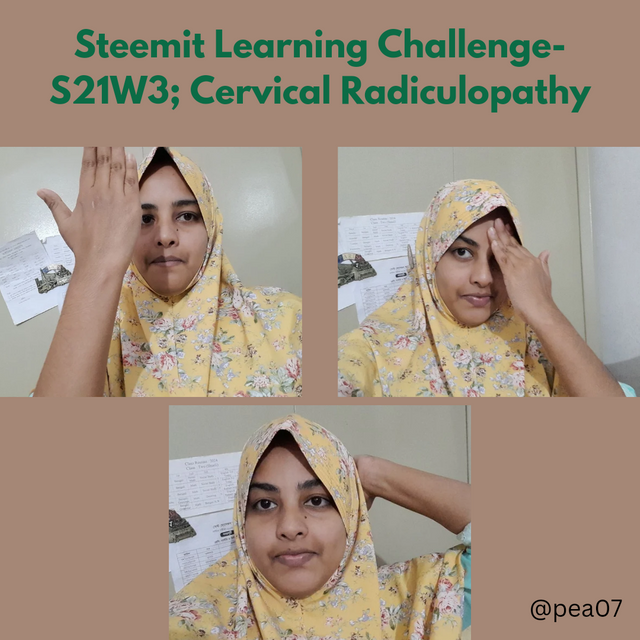
What's Cervical Radiculopathy? Write in your own words after getting knowledge from the lesson post.
Before I explain what cervical radiculopathy is I would love to start from very basic because our instructor has asked us to write in our own words. The word Cervical derives from the Latin word “cervix,” which means “neck.” In the case of cervical radiculopathy, it is the issue of our neck. We all know about the Cervical nerve around our neck, which is a set of eight pairs of spinal nerves that originate from the cervical region of the spinal cord or neck. If the nerves in human's neck are compressed or irritated and ends in tolerable or intolerable pain, then that is called cervical radiculopathy. Or we can say, It is a medical condition reasoned by pressure on the nerves of the neck area. These nerves send signals to the arms, shoulders, and fingers. When a nerve root in this area is "pinched," it obstacles the normal flow of nerve signals.
These nerves travel from the spine in the neck down into the shoulders, arms, and hands. This can cause discomfort, weakness, or unusual sensations in the areas that the affected nerve serves. Let me explain this more simply with an example. Imagine carrying water to the garden (your arms and shoulders) through the water pipe (which symbolizes your spine). When the pipe is straight, water reaches every part of the garden effortlessly. But if there is a bend in the pipe near the faucet (near the jugular vein), the flow of water is obstructed, and some parts do not get enough water. I think everyone has this experience. Similarly, when a nerve in the neck is stressed, the signal flow through that nerve is interrupted, affecting the parts connected to that nerve. This can cause pain, weakness or unusual sensations in the shoulders, arms or hands, just as parts of the garden are not being watered properly if the water reaches less.
Symptoms of Cervical Radiculopathy
- PAIN- The first symptom is radiating pain in the throat and neck, this pain may be severe and may radiate to the shoulder or arm.
- NUMBNESS -There may be a feeling of paralysis in the part of the affected nerve.
- WEAKNESS- Weakness may be felt in the arm or shoulder muscles, which affects arm movement.
- LOSS OF SENSATION-There may be loss of sensation in the fingers, resulting in disruption of regular function.
- Cervical radiculopathy type only affects one side of our body — for example, our right arm, not both arms. This is an important symptom to figure out this problem.
Causes of Cervical Radiculopathy
- Disc Herniation - If one or more parts of the disc in the neck spine are damaged, it can put pressure on the nerves and this could be lead cervical radiculopathy.
- Compression fracture is the breaking of the bone due to sudden or excessive pressure and can lead to this problem. Compression fractures usually occur in relatively weak bones in the human body like the spine (backbone).
- Osteoarthritic changes- These changes occur with age or as a result of bone fractures causing cervical radiculopathy. Examples of these changes include bone spurs or bone growth in the spine, which is mentioned as one of the causes.
- Degenerative Disc Disease - Spinal disc degeneration can occur with age, which puts pressure on nerves. it is more common in people in their 50s and 60s.
- Trauma and Tumor- Some other reasons include trauma from any kind of accident, tumor.
Diagnosis Of Cervical Radiculopathy
| Physical examination is first process of any diagnosis. Physical examination is the basic information about the patient on which the next tests will depend. |
|---|
| Spine X-ray is the most common tests which is done through imaging for diagnosis it. |
|---|
| Magnetic resonance imaging or MRI uses a magnet, radio waves to produce detailed images of the inside of patients body |
|---|
| Computed Tomography or CT scan is the text to figure out the structures inside of patients body by using X-rays |
| Electromyography or EMG is a test throgh which measures muscle response |
| --- |
| Lastly the Nerve Conduction Study or NCS test which is an effective test for diagnosis Cervical radiculopathy. |
|---|
Treatments of cervical radiculopathy
- Initial treatment begins with rest and medication, usually using anti-inflammatory drugs and painkillers.
- Physiotherapy helps reduce pain and increase movement so it is a very effective treatment.
- Steroid injection is helpful in reducing pain and inflammation so injection is suggested as its treatment.
- The last treatment is surgery. If other treatments don't work, surgery is done to relieve pressure on the nerve.
Prevention of cervical radiculopathy
You know the golden sentence "prevention is better then cure" -So we should
- Do some regular exercise no matter how old are you.
- Maintain a good posture
How would you diagnose a Cervical Radiculopathy? Any clinical investigation or assessment tests?
How would I diagnose Cervical radiculopathy is in the way I mentioned in the first question. And yes I will go for both clinical investigation and assessment tests. Here I am going to write about it in a well arranged way. Diagnosing cervical radiculopathy needs a combination of tests ( physical examination, medical history, and diagnostic tests) to confirm the presence of it and not only the presence but also the location of nerve compression in the cervical spine can also be determined though this tests. The very first thing I will do is
Medical History and Physical Examination
- This is a very basic step, where any doctor takes the patients medical history first. So I will also ask a patient about his medical history to diagnose Cervical radiculopathy. Things I will check in the medical history are: pain, any numbness or weakness, also how long he has been suffering from this problem, any previous history of neck injury or surgery in neck region, diraction of pain, any changes in his regular routine etc.
- Then I will take his physical test where cheack the movement of neck, Through this, it can be assessed whether the patient has any numbness or not.
Specialized Clinical Test
Spurling’s Test: The therapist extends the neck, tilts it toward the affected side, and applies gentle downward pressure on the head. This test provoke pain.
Shoulder Abduction Test: This text helps relieve pain . Here for comfirm ghe symptoms clear they recommend raising patient's arm above his head to assess the nerves, which or where he feels the irritation.
Cervical Distraction Tests - physiotherapist holds the patient's head and pull it very slightly. While doing this he communicates with the patient to know about the pain either ut increases or decreases.
Diagnostic Tests/ Imaging Test
X-ray is the most common test for cheacking degenerative changes like I mentioned above the bone spurs or narrowing of the spaces between vertebrae.
Magnetic resonance imaging or MRI is most usefull test for cervical radiculopathy which uses a magnet, radio waves to produce detailed images of the inside of patients body like soft tissues, including discs, nerves, and spinal cord.
Computed Tomography or CT scan is the alternative of MRI. I mean when MRI isn’t available for any reason the doctor suggest CT scan.
Electromyography or EMG is a test throgh which measures muscle response. It helps figure out the nerve damage and some other other conditions that could be causing similar symptoms.
Nerve Conduction Study or NCS test which is an effective test for diagnosis Cervical radiculopathy. It shows the nerve damage is due to compression or irrigation.
Try to practice at least 3 exercises that you have learned from the lesson. Share images, gifs or videos while practising.
In this lesson there are Isometric Neck Flexion, Isometric Cervical Rotation, Isometric Neck Extension,Isometrics Neck Retraction, Trapezoius, Scalene, Levator Scapulae Stretch. I have practice all this excercises but couldn’t capture all of them but I capture three of them.
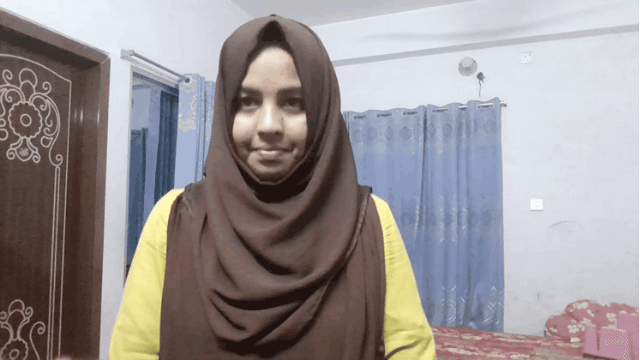
As the exercise name it is for neck flexion. It strengthen our muscles around neck
In this exercise I place my palm on forhead and hold for a while then release and rest.
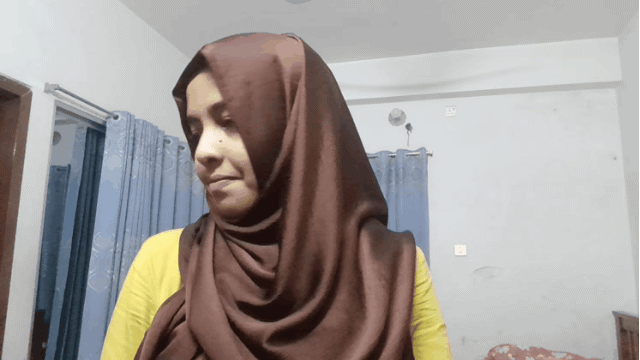
It's a head motion exercise and I use my hand on head to stop moving my head and push into it. I did it for a while and then relax.
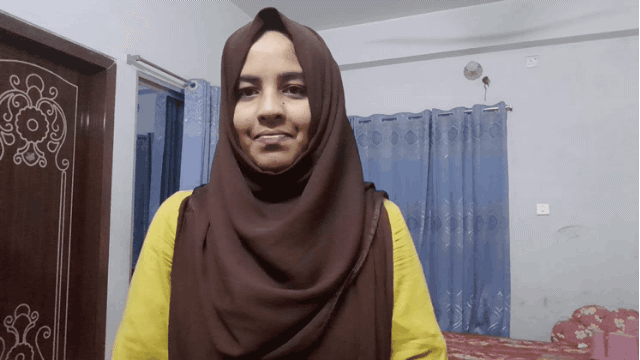
In this exercise we have to look at celling. I place my hand behind my head and push it into head. I did it fot a while and relax.
Share your review after performing these exercises either on yourself, healthy individual or patient.
Isometric Neck Flexion
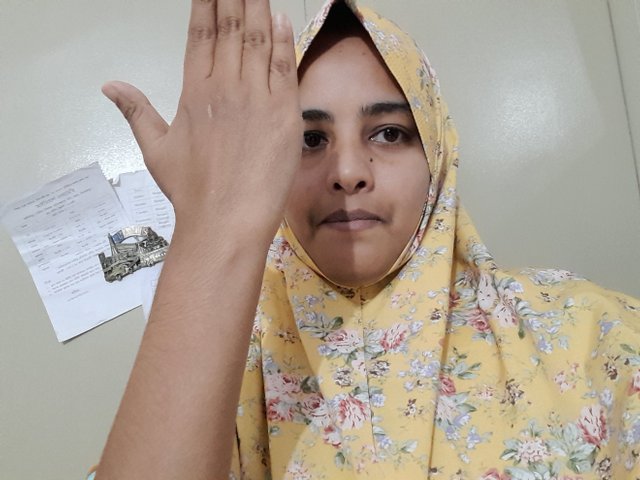
In this particular exercise, I press my forehead by my hand palm. It was a gentle pressure and feels really good after practising this. I was gentely pushing my head forward and resist by my plam. It is not showing because my neck is covered but I think you can understand by my picture. By this I feel my front neck muscle was strengthen than before. Also improves my neck stability and easy movement.
Isometric Cervical Rotation
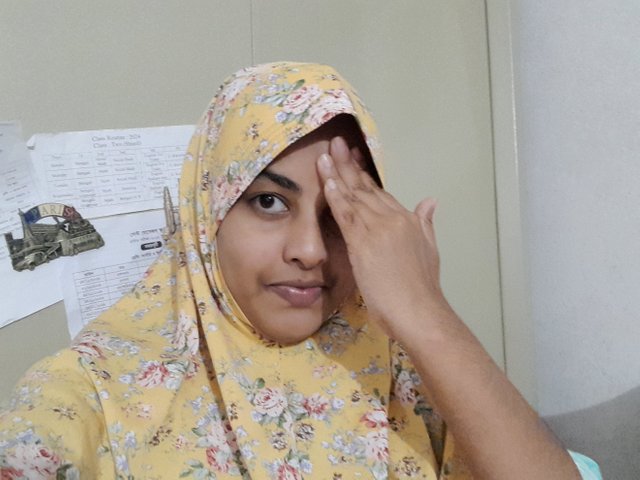
In this exercise, I move my neck both right and left. I did this repeatedly and then I use my one hand to stop movie. It was reliefing. My neck area was very free to movement. Actually without knowing this, I use to do this, why it was a regular exercise for me and of course it strengthen neck mucles and give a refreshing change.
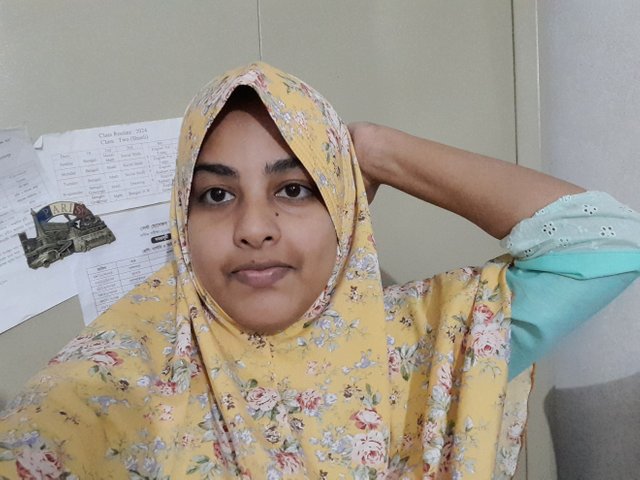
In this exercise we have to look at celling. After practicing this exercise I feel so good at my back neck. Also I feel good at my spine. This exercise was something else which relieve pressure of my back neck.
I am inviting my friends @drhira
@m-fdo @sualeha to participate in this SLC
Cc: @ashkhan
X share: https://x.com/pea079/status/1857065232188735991?t=jz8uEysa0NInQbhWgBkmng&s=19